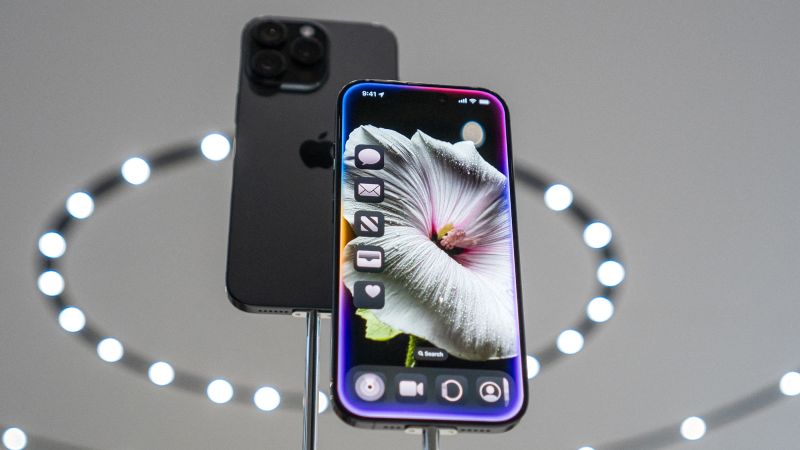The Future of iPhone Manufacturing: A Tariff-Driven Dilemma
In a bold statement on social media, President Donald Trump recently urged major smartphone manufacturers, including Apple and Samsung, to shift their production operations to the United States. He threatened a 25% tariff on any phones manufactured outside the country, particularly targeting those set to be sold in the U.S.
The Presidential Ultimatum
Trump didn’t mince words in his message to Tim Cook, Apple’s CEO. He made it clear that he expects all iPhones sold in the United States to be manufactured domestically, rather than in locations like India. “If that is not the case, a Tariff of at least 25% must be paid by Apple to the U.S.,” Trump stated, highlighting his commitment to prioritizing American manufacturing during his presidency.
Expanding the Tariff Net
During a press briefing in the Oval Office, Trump expanded the scope of his tariff threats, indicating that it would not just apply to Apple but also to Samsung and any other phone maker operating outside U.S. borders. “It would be more,” he noted, emphasizing the need for fairness in trade practices. This escalation in tariff rhetoric raises significant questions about the future of the tech industry in America.
Concerns Over Global Manufacturing
Trump’s dissatisfaction with Cook stemmed from recent announcements that Apple plans to manufacture iPhones destined for U.S. consumers at newly established plants in India. Over recent years, Apple has increasingly sought to diversify its manufacturing locations, moving a portion of its production to India as demand for affordable labor grows.
The Reality of Production Costs
The feasibility of reshoring production is a contentious topic. Financial experts point out that Apple’s dependence on China for production complicates any swift shifts. Current estimates suggest that around 90% of Apple’s iPhone assembly occurs within China. The transition costs to relocate production to the U.S. could be staggering, both financially and logistically.
The Case for Diversification
Despite facing potential tariffs, Cook revealed during an earnings call that he anticipates much of Apple’s iPhone production to soon be based in India, citing significant advantages in cost and available labor. With this shift, Apple aims not only to reduce production costs but also to mitigate risks linked to over-reliance on a single manufacturing country.
The Samsung Factor
Samsung’s situation differs from Apple’s, as the South Korean giant has already significantly reduced its manufacturing presence in China. Most of Samsung’s smartphone manufacturing occurs in South Korean, Vietnamese, Indian, and Brazilian facilities, making it less vulnerable to Trump’s tariff threats.
Apple’s Economic Calculations
The prospect of increased tariffs is not without financial implications for Apple. Estimates suggest that tariffs could potentially cost Apple as much as $900 million in the current quarter alone. However, the financial tide has somewhat shifted in their favor, given recent exemptions on electronics from tariffs previously levied against China.
Legislative and Strategic Dimensions
Trump’s administration is keen on boosting American manufacturing capabilities, particularly in industries that impact national security, such as semiconductors. Treasury Secretary Scott Bessent highlighted the vulnerabilities posed by external production, underscoring the need for a secure and robust semiconductor supply chain.
Challenges of U.S. Manufacturing
Steve Jobs, Apple’s legendary co-founder, previously raised concerns regarding the lack of skilled engineers in the U.S. during a conversation with then-President Barack Obama. His fears underscore a long-standing issue; many believe the U.S. education system is not producing enough qualified engineers to support a large-scale return of manufacturing jobs.
The Cost of Reshoring
Experts in tech and finance are skeptical about the feasibility of moving significant portions of production back to the U.S. Dan Ives, a technology analyst, argued that the idea of Apple producing iPhones domestically is more fantasy than reality. He estimates that moving even a fraction of production would require substantial investments and a complete overhaul of the existing supply chain.
Price Implications for Consumers
Trump’s proposed tariffs could escalate iPhone prices for U.S. consumers, with estimates indicating that iPhones made in the U.S. might cost upwards of $3,500. Market analysts warn that Apple may face pressure to raise prices across the board as tariffs rise, potentially alienating its customer base even further.
Apple’s Investment in the U.S.
In an effort to appease criticisms regarding its manufacturing choices, Apple announced a $500 billion investment to expand its U.S. facilities. This plan includes the establishment of new server production capabilities in Houston, which will create jobs and enhance its capacity to offer emerging technologies like artificial intelligence.
The Ongoing Discourse
As the dialogue around tariffs, manufacturing, and the tech industry continues to evolve, one thing remains clear: the landscape is complex and fraught with challenges. Balancing the pressures of global economics with domestic policy will be critical in shaping the future of not just Apple, but the entire tech production framework in the United States.


